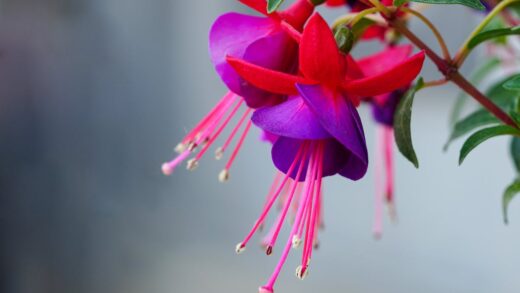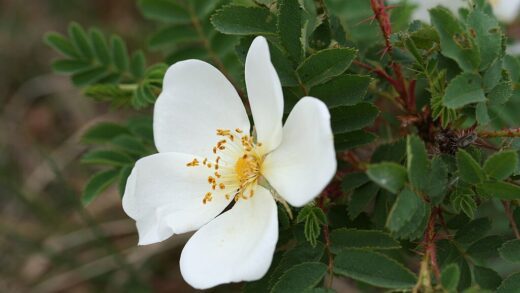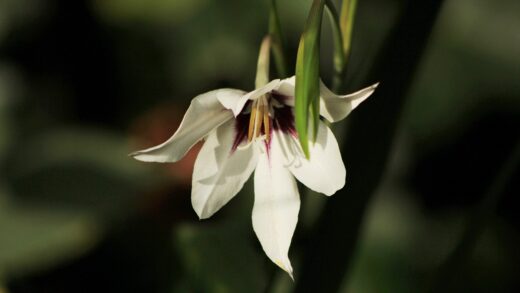Understanding the specific water requirements of basil is fundamental to its successful cultivation, as improper irrigation is one of the most common reasons for failure with this popular herb. Basil thrives in soil that is consistently moist but never waterlogged, a delicate balance that requires attentive management from the gardener. The plant’s need for water is directly linked to its large, soft leaves, which have a high rate of transpiration, meaning they lose water to the atmosphere relatively quickly, especially on hot and windy days. Therefore, the primary goal of any irrigation strategy for basil is to replenish this lost moisture and maintain adequate hydration within the plant’s vascular system without suffocating the roots in saturated soil.
The frequency with which you need to water basil is not a fixed schedule but rather a dynamic response to several environmental factors. The most significant of these are temperature, humidity, sunlight, and wind. During the peak of summer, when days are long, hot, and sunny, a basil plant will require significantly more water than it does during cooler, overcast periods in the spring or fall. Similarly, plants grown in windy locations will lose moisture more rapidly and require more frequent watering. The type of soil also plays a crucial role; sandy soils drain quickly and need more frequent irrigation, whereas soils with higher clay content retain moisture for longer.
A reliable method for determining when to water is to physically check the condition of the soil. Instead of watering on a rigid schedule, such as every other day, it is far more effective to insert your finger about one to two inches into the soil near the base of the plant. If the soil feels dry at this depth, it is a clear indication that it is time to water. If you can still feel moisture, it is best to wait and check again the following day. This simple, tactile approach prevents both underwatering, which causes wilting and stress, and overwatering, which is a leading cause of root rot and other fungal diseases.
When you do water, it is important to do so deeply and thoroughly. A light sprinkling on the soil surface is insufficient, as it only moistens the top layer and does not encourage the roots to grow deep into the soil. Deep watering involves applying enough water so that it soaks down to a depth of at least six inches, moistening the entire root zone of the plant. This practice encourages the development of a more extensive and resilient root system. A strong root system, in turn, makes the plant more drought-tolerant and better able to access water and nutrients from a larger volume of soil.
Best practices for irrigation
The technique you use to apply water to your basil plants can have a significant impact on their health, particularly in preventing common diseases. The universally recommended best practice is to apply water directly to the soil at the base of the plant. This can be achieved using a watering can with a long spout, a soaker hose, or a drip irrigation system. This method delivers water precisely where it is needed most—to the root system—while minimizing moisture on the leaves. Keeping the foliage dry is a key strategy for preventing the development and spread of fungal diseases like downy mildew and powdery mildew, which thrive in damp conditions.
Overhead watering, from a sprinkler or a hose nozzle sprayed from above, should generally be avoided for basil. While it may seem like a quick and easy way to water a large patch of herbs, it wets the entire plant. This creates a humid microclimate within the plant’s canopy, which is an open invitation for fungal pathogens. If overhead watering is your only option, it is absolutely essential to do it early in the morning. This timing gives the leaves the entire day to dry out in the sun, significantly reducing the risk of disease compared to evening watering, which would leave the foliage damp throughout the night.
The time of day you irrigate is another crucial factor in an effective watering strategy. As mentioned, early morning is the ideal time to water your basil. During this time, temperatures are cooler and winds are generally calmer, which means less water is lost to evaporation before it has a chance to soak into the soil. Watering in the morning also ensures that the plant is well-hydrated and prepared to face the heat and stress of the midday sun. Watering in the middle of a hot day is the least efficient approach due to high evaporation rates, and late evening watering, while better than midday, carries the risk of promoting fungal growth on damp, cool foliage overnight.
For gardeners using drip irrigation or soaker hoses, these systems offer the most efficient and effective way to water basil. These systems deliver water slowly and directly to the root zone, which results in very little water loss to evaporation or runoff. They also help to keep the foliage completely dry, drastically reducing disease pressure. Furthermore, by providing a slow and steady supply of moisture, they help to maintain that ideal state of consistent soil moisture that basil loves, preventing the stressful wet-dry cycles that can occur with less frequent, manual watering methods. These systems represent a highly effective, water-wise approach to irrigation.
Watering container-grown basil
Basil grown in containers has distinct watering needs compared to plants grown in garden beds, primarily because the limited volume of soil in a pot dries out much more rapidly. The soil in containers heats up faster, and moisture is lost not only through the surface but also through the porous sides of materials like terracotta. As a result, containerized basil requires more frequent watering, often on a daily basis during the hot summer months. It is essential to monitor these pots closely, as letting them dry out completely, even for a short period, can cause significant stress and wilting.
The importance of proper drainage in containers cannot be overstated. When planting basil in a pot, you must ensure that the container has one or more drainage holes at the bottom. Without adequate drainage, any excess water will accumulate in the bottom of the pot, creating an anaerobic environment that will lead to root rot. This condition is one of the most common killers of potted herbs. When you water, you should do so thoroughly until you see water beginning to seep out of the drainage holes. This is a sign that the entire volume of soil, from top to bottom, has been moistened.
The type of container material you choose can also influence your watering schedule. Terracotta or unglazed clay pots are porous, meaning they allow water to evaporate through their sides. This property helps to keep the soil well-aerated but also means that the soil will dry out very quickly. Plastic or glazed ceramic pots, on the other hand, are non-porous and will retain moisture for a longer period. While they require less frequent watering, it’s also easier to overwater plants in these containers if you are not careful. Understanding the properties of your container will help you to better manage your irrigation routine.
Self-watering containers can be an excellent option for growing basil, especially for gardeners who have busy schedules or are prone to forgetting to water. These containers feature a built-in reservoir at the bottom that holds a supply of water. A wicking system draws water up from the reservoir into the soil as needed, providing a constant and consistent level of moisture to the plant’s roots. This method helps to eliminate the guesswork of when and how much to water, and it is very effective at preventing the soil from ever drying out completely, creating a stable and stress-free environment in which basil can thrive.
Signs of improper watering
Basil plants are quite expressive and will provide clear visual cues when they are receiving either too little or too much water. The most obvious sign of underwatering is wilting. When the plant does not have enough water to support its cellular structure, the leaves and stems will lose their turgidity and begin to droop. You may also notice that the lower leaves start to turn yellow and dry up, and the soil will feel dry and may even pull away from the sides of the pot. If you see your basil wilting during the heat of the day but it recovers in the evening, it’s a strong signal that it needs more frequent or deeper watering.
On the other end of the spectrum, the signs of overwatering can sometimes be more subtle initially but are far more dangerous to the plant’s long-term health. A key indicator is the yellowing of leaves, but unlike with underwatering, these yellow leaves will often feel soft and limp rather than dry and crispy. This symptom often starts with the lower leaves and progresses up the plant. You might also notice stunted growth, a lack of vigor, or a generally unhealthy appearance. In severe cases, the base of the stem may become brown, soft, and mushy, which is a definitive sign of stem or root rot.
Root rot is the most severe consequence of chronic overwatering. When the soil is perpetually saturated with water, the air pockets within the soil are eliminated, depriving the roots of the oxygen they need to function and survive. This anaerobic condition is a perfect breeding ground for water-mold fungi, such as Pythium and Phytophthora, which attack and decay the root system. Once root rot has taken hold, it is very difficult to reverse. The plant’s ability to absorb water and nutrients is compromised, and despite being in waterlogged soil, the plant may paradoxically begin to wilt because its damaged roots can no longer function properly.
Preventing improper watering is a matter of diligence and observation. Beyond the physical check of soil moisture, you can also gauge the need for water by the weight of a container. A well-watered pot will feel significantly heavier than one with dry soil. It’s also important to adjust your watering habits in response to the weather. A week of cool, rainy weather means you should drastically reduce or even eliminate supplemental watering, while a heatwave will require a significant increase in frequency. Learning to interpret the signs your plant gives you is the key to providing the right amount of water at the right time.
Water quality and its effects
While the quantity and frequency of watering are the most critical factors, the quality of the water used for irrigation can also have an impact on the health of your basil plants. Most municipal tap water is perfectly suitable for watering basil and other garden plants. However, in some areas, tap water can be heavily treated with chlorine or chloramine, which are added to kill bacteria. While these chemicals are present in low concentrations, some sensitive plants can react negatively to them over time. If you are concerned about chlorine, a simple solution is to let the water sit in an open container for 24 hours before using it, which allows most of the chlorine to dissipate into the air.
The hardness of your water, which refers to the concentration of dissolved minerals like calcium and magnesium, can also be a factor, particularly for container-grown plants. Over time, watering with very hard water can lead to a buildup of these mineral salts in the soil, which can appear as a white, crusty deposit on the soil surface or around the pot’s drainage holes. This buildup can alter the soil’s pH and may eventually interfere with the plant’s ability to absorb nutrients. If you have very hard water, it can be beneficial to occasionally flush the pot by watering it thoroughly with distilled water or rainwater until water flows freely from the bottom, which helps to leach out some of the excess salts.
Rainwater is often considered the gold standard for irrigating plants. It is naturally soft, slightly acidic, and free from the chemicals and dissolved minerals found in many municipal water sources. Collecting rainwater in a barrel or cistern provides a free and high-quality source of water for your garden. Using rainwater can lead to healthier plants and can be particularly beneficial if your local tap water is very hard or heavily treated. It is also an environmentally friendly practice that helps to conserve a precious resource.
Ultimately, for most home gardeners, the source of the water is less of a concern than the proper application of it. Unless you know your water is exceptionally hard or has specific quality issues, you should focus your attention on the core principles of watering: watering deeply and thoroughly when the soil begins to dry, applying water to the base of the plant, and doing so in the morning. These fundamental practices will have a much greater impact on the health and productivity of your basil plants than the specific type of water you use.


















